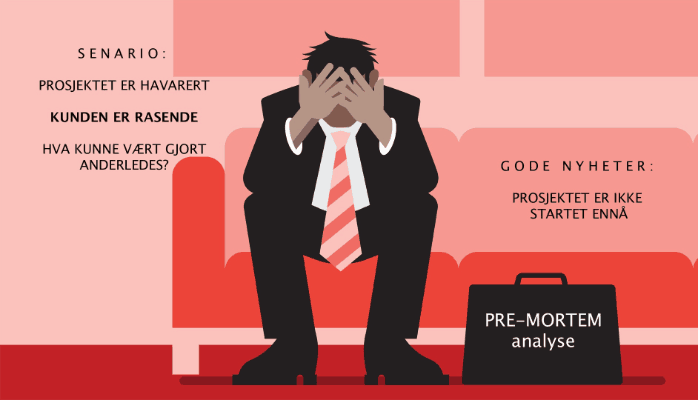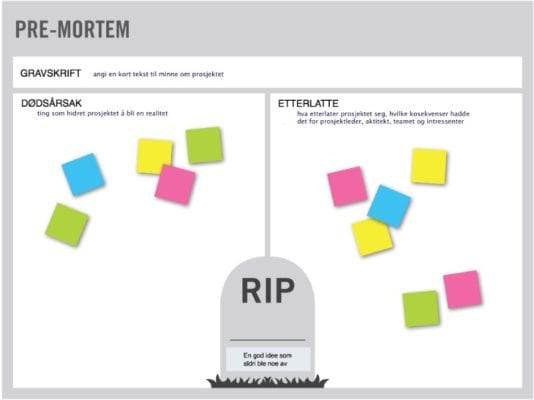Imagine a situation where a project has failed. Nothing of value is produced, at costs that no one had anticipated. The customer is furious, the project manager has hidden and the team is frustrated. The natural question is "Why?". The "Pre-Mortem" method can help prevent the scenario from becoming a reality.
The pre-Mortem method can be seen as a form of risk analysis, but staged and dramatized in a different way than a classic risk review.
Tips for the practice:
Collection of information
- Include all possible events that could affect the project and lay the groundwork for the disaster envisa. Be sure to include general and specific causes that have been the cause of the failure.
- Feel free to problem, but be sure to come up with options that would avert disaster (mitigering), a backup plan or the best course of action to address the disaster when it occurs
- Include an analysis of all stakeholders in the review to explain why things went so wrong
- Address organisational causes inside and outside the project
- It is common to point only to actors other than themselves and high-level risks against which the project did not take action. Try to avoid it.
- Focus on case/role not person.
- An explanation for why it went wrong is often part of a causal series. Elaborate.
- Distinguish between project and application risks.
- Highlight what it means to YOU that your project is a complete failure and why YOU should have spent time and effort to make your project more successful.
Prioritization
Focus on issues that are considered top 10 in terms of probability of occurrence, and that could potentially be a "showstopper" for the project. Remove problems you are already checking.
Result
All explanations should be generalised, categorised and included in the project/programme's risk register. So, nonconformity-managing measures are initiated to ensure that you do not end up in the situation that was just described, or make sure to have a plan for what to do when the situation occurs.
As with any other methodology of this type, a certain maturity is required in the organization to take advantage of such an exercise.



